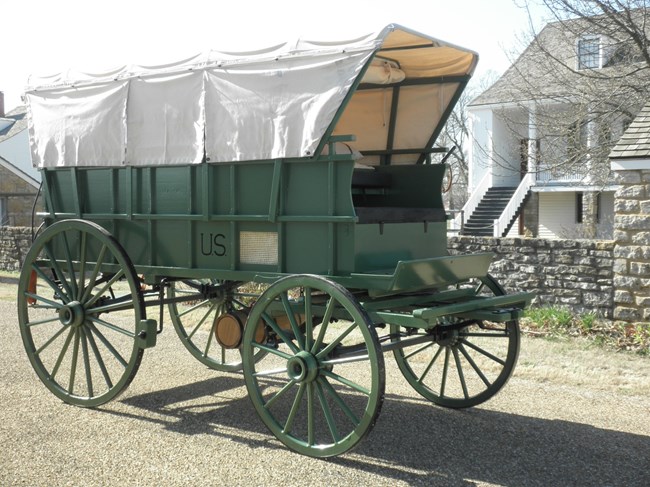 |
| Daguerreotype, ca. 1847. My collection |
Sometime in the later 1840's a young man walked past a daguerreotype studio in his town or city. Like most men at that time he wore a suit and tie of the time. He also wore a fancy and colorful vest, typical of the time, that offered a contrast to his dark jacket. He stepped in, plunked down his $2 and waited his turn, looking at the examples of the daguerreotypist's work on display. When his turn came he sat down and the daguerreotypist told him to stay motionless and not blink until he said he could move. It might have seemed an eternity but he got through it. His serious expression revealed his uncertainty about what the picture would be like. He had seen his own reflection in a mirror many times, but once he turned away the reflection was gone. Now he had a permanent mirror reflection.
The question that came to mind immediately for those who considered the implications of a photographic image was whether the daguerreotype could capture not only the physical appearance of a person but the inner, true person as well. Today, we know instinctively that a photograph can point toward the inner person without capturing them completely, but it was an open question initially.
We don't know what he did with the picture. Perhaps he gave it to his parents before moving away to the big city to take on a job. Perhaps it was a gift for his fiance or young wife. We don't know. What we do know is that in those early years of photography in America he became one of countless Americans who partook of this hugely popular phenomenon.
The daguerreotype was introduced in 1839 by Louis Daguerre in France, and quickly caught on in the United States. Daguerreotype studios began popping up in American cities in early 1840. Early daguerreotypes are easy to spot because of their sparse and sometimes stark character, as this image of a young man dating from 1840-1843. The brass mat is coarse and plain, without ornamentation. And most notably, he has the classic deer in the headlight look about him, as if he didn't know what to do. Which is exactly what we could expect from someone who was encountering for the first time a technology that he didn't understand.
Prior to Daguerre's invention a family with means could commission a portrait, perhaps a miniature of a loved one to remember them by if they were away from home, or had died. There would always be an element of the painter flattering the sitter by making adjustments to improve the face. This couldn't be done with a daguerreotype, though. It was warts and all or nothing at all.
Initially, the daguerreotype process was seen primarily as a way to preserve images of architecture, and artifacts of antiquity such as hieroglyphic inscriptions. Newspaper editorials waxed philosophic about it:
The Daguerreotype is destined to high purposes. It is one of the most brilliant discoveries the mind of man has ever conceived and compassed. That light should be its own historian and draftsman, is indeed a sublime conception. Its perfection is unapproachable by human hand, and its truth raises it high above all language, painting or poetry. It is the firs universal language, addressing itself to all who possess vision, and in characters alike understood in the courts of civilization and the hut of the savage.
Charleston (SC) Courier
Friday, Jan 17, 1840
By the author's description, would the definition of civilization be the ability to see oneself accurately, as in a mirror? There's a lot to unpack here.
 |
| The (New York) Evening Post, Jan 31, 1840 |
 |
| Daguerreotype ca. 1843-47. My collection |
People at the time had no way to adequately describe this new technology:
It is a modern invention of art to catch the intangible image of the human countenance, and preserve it in the form of a perfect likeness. The subject pauses a moment as he passes, and when he looks again, he beholds the beautiful miniature.
The Religious Herald, Hartford, CT
Saturday, Mar 21, 1846
 |
| Grant Wood, "American Gothic," Art Institute of Chicago (Wikipedia) |
The idea that having one's photograph taken must mean putting on a stern, expressionless face endured for some time. This standardized view of posing for a photograph lasted for a very long time, well past the era of the daguerreotype, which ended for all practical purposes around 1860 as more affordable options appeared. In effect, people didn't have the stern appearance because they had to because of long exposure time. That actually wasn't very true. It was more likely because having a photograph taken was not the casual thing it is now, but was a formal event, and a serious expression seemed more appropriate. It is generally accepted that Grant Wood modeled his painting, "American Gothic," on this general way of posing for a photograph, what an 1859 writer called the "cold, somber daguerreotype expression." (The Ladies' repository, Volume 19:8, Aug 1859) The expressions on the faces of the man and woman below exemplify this formal attitude. This couple caught my attention because of their resemblance to American Gothic, and their serious expressions give the impression that they were waiting to be put to death.
 |
| ca. 1847 daguerreotype, my collection |
Facial expressions aside, Americans quickly realized the novelty of this new invention. The idea of having an actual image of oneself or of a friend or loved one was important. Daguerreotypes were expensive, though, the equivalent of at least $40, so they were not taken very often by many.
An 1852 poem, "The Gold Hunter and the Daguerreotype," written in the sentimental style of the time, was about a prospector who had left his family back east to make his fortune prospecting for gold in California. He had been gone for a year and missed his family. As he sits wistfully, thinking of his wife and family, someone delivers a small package to him that contains a daguerreotype of his children, sent from home:
A stranger greets him a moment, and leaves
A package, for his hand
Eager he breaks the seal, as he sees
It comes from his native land.
A small clasped case-he touches a spring
When, like the light of a star,
Two sweet faces look up into his,
Laughing out, "Here we are, Pa."
The Pacific, Oct 22, 1852
 |
| Daguerreotype, ca. 1847, my collection |
Memory soon became a prominent motivation for people to have their photograph made. The young man pictured above probably went on and had his picture taken a number of times in his lifetime, with new and easier, more affordable technologies available. A particular sub-genre of daguerreotypes, though, reveals an older generation of Americans. Daguerreotypes of elderly women are very common, pointing toward their importance to families. This image dates from around 1847. It's safe to guess that the woman it portrays was probably around seventy years old, perhaps older. If that were the case, she would have been born in the later years of the eighteenth century, perhaps around the time of the beginning of the American Revolution in 1776. Given the shorter average life span at the time, someone in her 70's would have lived a long life. It's easy to understand why a family would persuade their grandmother to have her photograph taken so they could remember her when she had died. This photograph is likely the only picture ever taken of this unidentified woman, and it depicts someone who grew up and matured in the previous century when such technology was unheard of. Rarer still are daguerreotypes taken of surviving veterans of the American Revolution.
A younger generation, such as the young man above, took advantage of the novelty and had their picture made. The daguerreotype of the young woman below dates from about 1843-47. It would appear that she is probably twenty years or so old at best. Was the picture made when she turned eighteen, or when she became engaged? If she was in her early twenties, that would put her birth date at the early 1820's. In all likelihood, barring illness or accident, she could have lived into the 1880’s
 |
| Daguerreotype, ca. 1847. My collection |
The older man to the left, on the other hand, was probably middle aged in this daguerreotype taken around 1847. He might have lived to the Civil War, perhaps.
 |
| Daguerreotype ca. 1843-7. My collection |
With our world constantly bombarded with images today, it is difficult to imagine a world in which the technology of producing an exact visual image of a person was new and exciting. These images were valuable and held a place of pride in a home. They also provided a visible way to remember someone who was afar off, or no longer living. It is helpful to pause and consider how precious a single image could be.
One last sub-genre of daguerreotypes is images of the recently deceased. This may sound ghoulish to us today, but if an elderly parent died and the family had never had a daguerreotype made of them while they were living, photographing them in death was the last option available to have an image of the loved one. This was common enough so that a daguerreotype studio in Hartford, Connecticut advertised in 1846 that they could take images of the deceased accurately. I have a post-mortem ambrotype of a man and a tintype of an infant, but not a post-mortem daguerreotype. Those are relatively rare and command a very high price.
 |
| Hartford Times, Oct 24, 1846 |
The possibilities for the new art of photography grew as the technology improved and became easier to do and more affordable. Daguerreotypes were complicated to make, involving several chemical processes that had to be done precisely. With the advent of ambrotypes and tintypes in the 1850's photographs came within reach of average people.






















